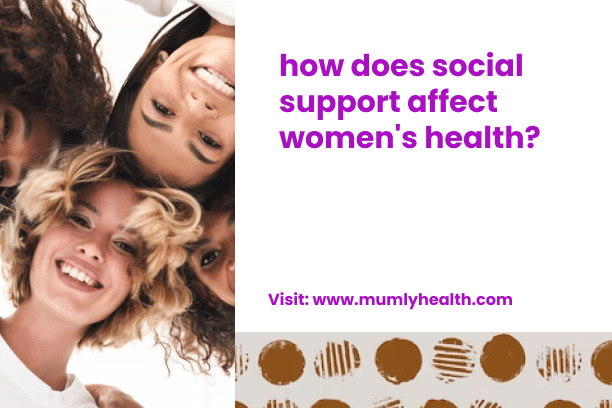- Methods
- Study population and data collection
- Data analysis
- Results
- Participants’ characteristics
- Perceived social support
- Limitations
- Implications
- Conclusion
Social support encompasses the emotional and material aid conveyed through interpersonal connections, aimed at enhancing the well-being of individuals. It involves the exchange of resources among people, perceived as beneficial by both giver and receiver. While various definitions exist, social support generally falls into two categories: objective, reflecting what individuals have received, and subjective, based on their perceived availability of support.
It comprises three main dimensions—emotional, informational, and instrumental—each capable of being perceived positively or negatively. Social support is a reciprocal process within human interactions, offering comfort, assistance, and motivation. It fosters compatibility, satisfaction, and effective living.
Perceived social support is influenced by several determinants categorized into four groups: sociodemographic characteristics (age, gender, education, ethnicity/nativity, culture, and socioeconomic status), social network characteristics (size and frequency of contact), social integration and involvement (marital status, living arrangements, employment, memberships, and religious activities), and health status (perceived health, chronic conditions, and stress).
Acknowledged as crucial for health promotion, social support meets physical and emotional needs while mitigating the impact of stress on quality of life. Positive perceptions of social support correlate with improved health and well-being, while its absence heightens the risk of disease.
Methods
Study population and data collection
This population-based cross-sectional study involved 1359 Iranian women aged 15–49 in Tehran, selected through multistage cluster sampling. Tehran, which comprises 22 municipal districts, was the study setting. Initially, 135 domains were chosen using probability sampling weighted by the number of families in each district (proportional to size sampling), with one block randomly selected from each domain. Subsequently, 10 families were systematically chosen from each block, and a woman aged 15–49 from each family participated, resulting in the selection of 1359 women of reproductive age for the study. Individual interviews were conducted in participants’ homes by a team of interviewers, achieving a response rate of approximately 90%. In cases where a woman was unavailable or unwilling to participate, the interviewer proceeded to the next eligible home to complete the questionnaire. Interviewers followed a standardized procedure for questionnaire administration, with the study’s implementation monitored for data collection quality by the supervisory team.
All participants provided informed consent, and the study protocol received approval from the Ethics Committee of Tehran University of Medical Sciences, Iran. Details regarding the study protocol and participant eligibility criteria are available elsewhere. Face-to-face interviews were conducted with each participant, collecting data using questionnaires that covered sociodemographic characteristics and perceived social support. Sociodemographic factors included age, marital status, education, occupation, sufficiency of income for expenses, crowding index (categorized as low, average, or high), primary support source, ethnicity, as well as the level of education and occupation of spouses for married participants.
Data analysis
Sociodemographic characteristics and social support were analyzed descriptively using frequency, percentage, mean, standard deviation, median, and interquartile range (IQR). The one-way ANOVA test was employed to explore the relationship between perceived social support and sociodemographic characteristics. Backward multiple linear regression analysis was utilized to predict the impact of each independent variable (sociodemographic characteristics) on the dependent variable (social support) and to determine the variance.
Various assumptions related to multiple regression, including multicollinearity, normality, homoscedasticity, outliers, and missing data, were assessed. Independent variables with a significance level of p < 0.2 in the bivariate test were entered into the backward regression model. Interaction term analyses were conducted to examine the relationship between predictors of social support and its outcomes. Additionally, separate analyses were performed for the dimensions of social support. The data analysis was conducted using SPSS version 16.
Read Also: How Erectile Dysfunction Affects a Woman: Can This Worsen a Couple’s Relationship?
Results
Participants’ characteristics
More than one-third of the women were aged 35 years or older, with a mean age of 31.9 ± 9.5 years. The majority of women were married and identified themselves as housewives. Nearly 70% reported that their monthly income was sufficient to cover their expenses. Among the respondents, 83.8% indicated their spouse or parents as their primary source of support when assistance was needed. Regarding married participants, nearly a quarter (28.5%) of their spouses had attained a university education, and 43.4% were employed in the private sector.
Perceived social support
The average score for social support was 134.3 ± 17.9. Among the dimensions of social support, “an indication that one is valued” received the highest score, while “the feeling of being an integral part of a group” received the lowest score.
In this study, Iranian women of reproductive age reported relatively high levels of perceived social support, with the highest scores observed in the domain of “worth” and the lowest scores in “social integration”. Significant associations were found between perceived social support and variables such as education, spouse’s occupation, sufficiency of income for expenses, and primary support source.
Compared to other studies, the mean score of perceived social support in our study was higher than that reported in studies conducted by Adams et al. (2000) among rural women in a southern state of the United States (121.7 ± 14.1) [11], Hovey and Magana (2002) among immigrant farmers in Mexico (132.9 ± 26.5), and Rambod and Rafii (2010) among patients undergoing hemodialysis in Iran (131.9 ± 25.8). However, it was lower compared to studies conducted by Doucette (2000) among patients with congestive heart failure in Canada (141.2 ± 20.9), and Dalla et al. (2006) among paraprofessional educators in the state of Nebraska in the United States (147.4 ± 19.2).
The variations in the mean score of social support observed across different populations may be attributed to a range of factors, including sociodemographic characteristics, social network structures, personality traits, and levels of social involvement, which can influence individuals’ perceptions of social support.
Limitations
This study has several limitations associated with its cross-sectional design. Firstly, the design does not allow for causal interpretations, meaning that cause-and-effect relationships cannot be inferred. Secondly, since data are collected at a single point in time, the study only captures a snapshot of the current situation and does not track changes over time, either past or future. Thirdly, the generalizability of the findings is limited to the specific geographic area where the participants were recruited.
Furthermore, the assessment of perceived social support in this study is subjective, relying solely on the women’s perceptions, moods, and attitudes, which can vary over time. As a result, the measurement of social support is contingent upon individual perceptions and may not fully capture the complexity of social support dynamics.
Implications
The findings of this study shed light on the perceived social support among reproductive-aged women in Iran, highlighting their lowest scores in the domain of “social integration.” This underscores the importance of encouraging women to cultivate positive social bonds and fostering a deeper understanding of social integration characteristics and the community’s role in integration.
It’s crucial to consider sociodemographic factors when planning interventions aimed at enhancing social support for women of reproductive age. National programs for women should include interventions geared towards increasing the quality and quantity of social support available to them. There is ample literature supporting the notion that social support significantly influences health outcomes. As healthcare providers expand their perspective of health to include social dimensions, it becomes imperative for them to incorporate these insights into practice, thereby delivering more effective care that addresses the holistic well-being of women.
Conclusion
The results of this study suggest that women of reproductive age perceive relatively high levels of social support. They feel respected by others but are less inclined to engage in social groups. Given that both family support and participation in social groups contribute to the well-being of women of reproductive age, it is crucial to encourage them to cultivate positive social connections. Sociodemographic factors play a significant role in shaping social support and should be taken into account when designing interventions aimed at enhancing social support for women in this age group.

